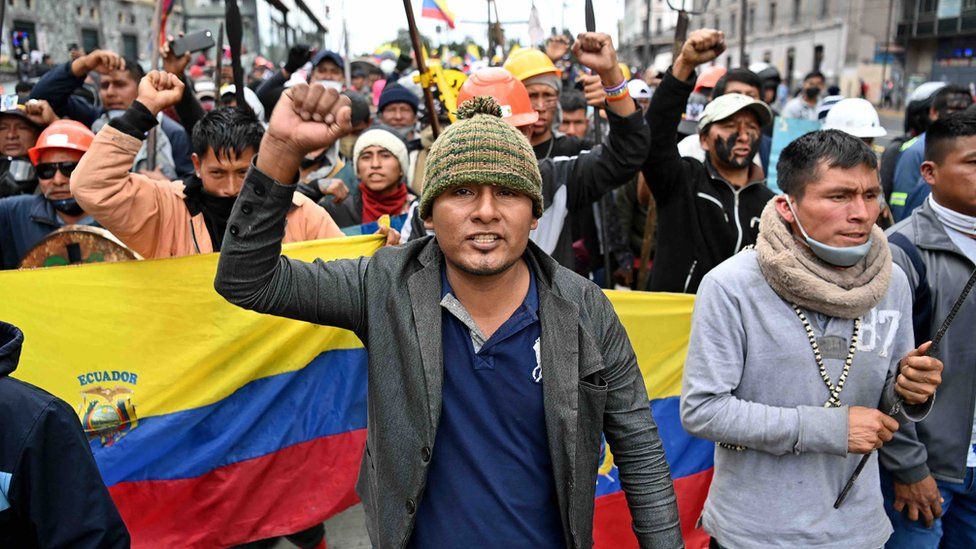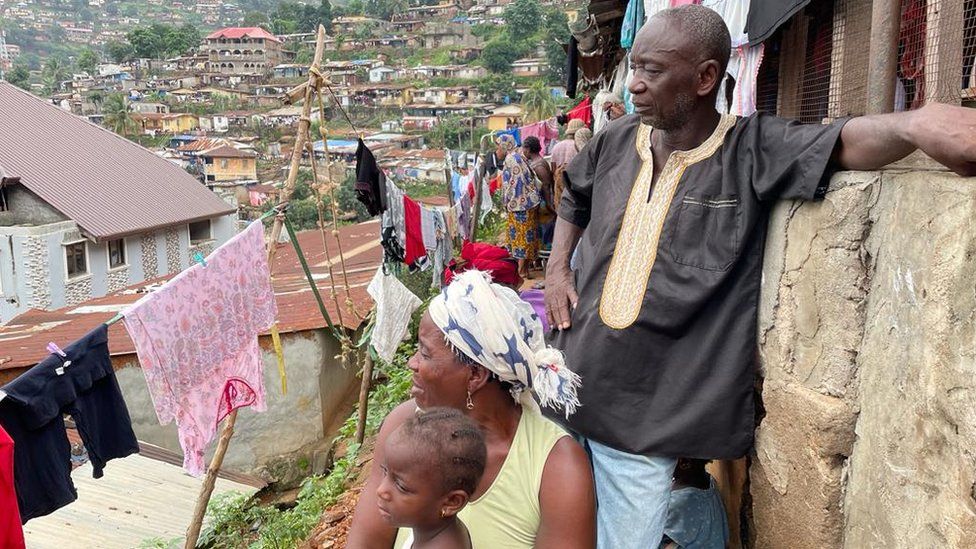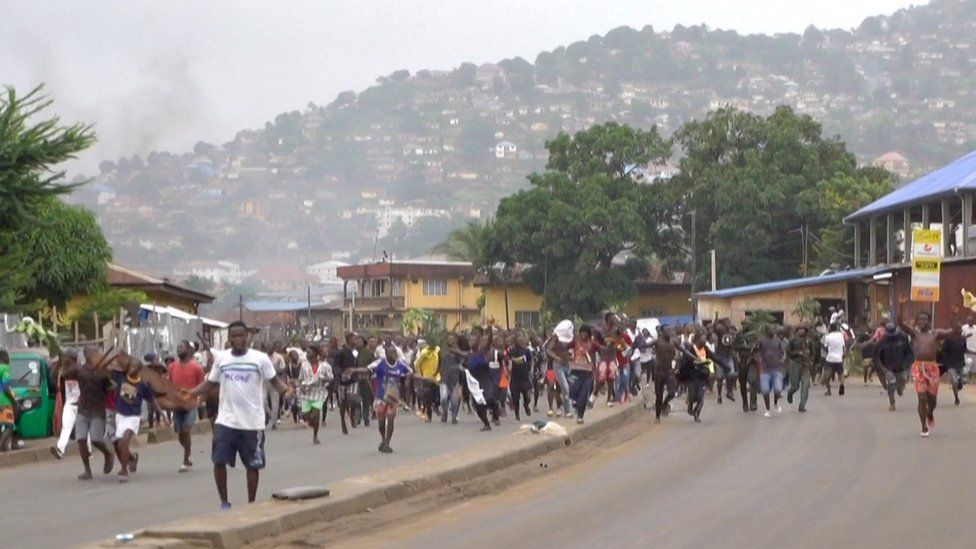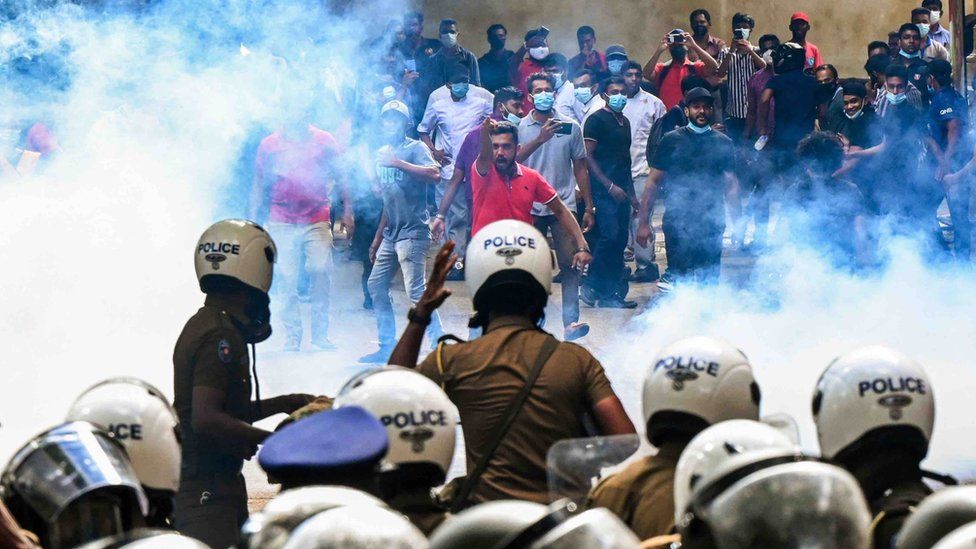“Fuel protests gripping more than 90 countries”, BBC News
By Efrem Gebreab & Thomas Naadi & Ranga Sirilal & Becky Dale, London, 18 Oct, 2022
Related Topics

High costs of living are driving people to protest in the streets against crippling prices. The BBC has mapped all reported demonstrations over fuel since January 2021, revealing a huge increase in protests this year.
Fuel costs affect many aspects of daily life – personal travel, transportation of goods, energy for electricity and heating.
Around the world demonstrators have called for change. They’ve demanded that petrol be made more affordable or available at all.
They’ve sat in peaceful protests and they’ve attacked governments.
Some have paid an even higher price.
Fights over fuel
16-year-old Khadija Bah was standing on her family’s front porch when she was shot.
For days, Khadija had been watching growing crowds of demonstrators rally, gathering only metres from her house on the east side of Sierra Leone’s capital, Freetown.
But on 10 August, the protests turned violent. As armed police clashed with protesters, a stray bullet hit Khadjia. She sank to the ground and died almost immediately.
Her mother, Maria Sesay, is still struggling to come to terms with the death of her daughter. A student at the local secondary school, Khadija’s dream was one day to become a nurse.

“I’m so sad,” her mother says. “Up until now, I have struggled so hard to raise my daughter. But now she is dead. I’m in so much pain.”
Violence like this has not been witnessed in this small west African nation for years. This time, it was sparked by record-breaking fuel prices.
In the month of August, violent clashes in the capital killed 25 people, including five police officers.
Since March, the price of fuel in the country has nearly doubled, from 12,000 Leones ($0.86; £0.73) per litre to a record high of 22,000 Leones ($1.58; £1.35) in July.
In July, the central bank introduced new banknotes – stripping three zeros off the Leone – in a move to restore confidence in its inflation-hit currency.

Eventually the violence was subdued after the authorities declared a city-wide curfew. The internet was also throttled, to prevent the protestors from communicating and organising yet another rally.
Sierra Leone’s president, Julius Maada Bio, later declared the protests were a violent attempt to overthrow his government. However, numerous residents dispute this, telling the BBC they took to the streets to rally against the rising price of fuel and food.
But Sierra Leone is far from alone in its struggles with rising prices and protests over the cost of living.
A global petrol crisis
By analysing data on demonstrations worldwide, collected by the Armed Conflict Location and Event Data Project (Acled), the BBC has established that between January and September this year people in more than 90 countries and territories took to the streets over the price or availability of fuel.
A third were countries which had no protests at all over fuel in 2021. For example, Spain had none in 2021, but saw 335 individual rallies just in March this year.
Aside from Antarctica, not a single continent has remained free of fuel protests in the last nine months.
In Indonesia there have been more than 600 protests over petrol so far this year compared to just 19 in 2021. In Italy, there were over 200 in the first eight months of 2022 compared to just two last year. And in Ecuador, there were over 1,000 protests over fuel in the month of June alone.
Most surprising to Henry Wilkinson, the chief intelligence officer from Dragonfly, a security and intelligence service, is where the protests are occurring.
“What is unusual this time is that we are seeing protests in places that are usually not prone to protests. The war in Ukraine has had a huge disproportionate impact. A resolution to the conflict would ease the global crisis significantly,” he says.
Reasons for the rises
The war in Ukraine is just one of many factors driving up the global price of fuel.
Crude oil was cheaper at the beginning of the Covid pandemic, because many businesses temporarily closed and the demand for energy collapsed. But as life returned to the “new normal” and energy demands increased, suppliers have struggled to keep up with demand which has pushed up prices.
The US dollar is at an all-time high against other major currencies; the pound, the euro, China’s yuan and the Japanese yen. The oil used to make petrol is paid for in US dollars. So a weak local currency against the dollar makes fuel even more expensive.
Finally, the Ukraine-Russian conflict has led to many countries declaring a ban on Russian oil imports. That means the demand for other oil from other producers has gone up, leading to higher prices.
From economic to political collapse
Of all 92 countries and territories experiencing civil unrest over fuel prices, it was Sri Lanka that made international headlines earlier this year after mass protests brought the government to its knees and led to the ousting of the former president Gotabaya Rajapaksa.
With one of the highest rates of inflation anywhere in Asia, Sri Lankans are suffering a major cost of living crisis as the price of fuel, food and medicine continues to rise.

48-year-old Wimala Dissanayaka, runs a vegetable stall in the upper-class suburb of Thalawathugoda, Colombo. She says her family is now living hand-to-mouth.
“Prices of everything have gone through the roof. Our costs of living are rising but our income hasn’t changed,” she says.
“I have three children and bus fares have increased so dramatically, it now costs 100 rupees ($0.27; £0.24) per kid to go to school. So, it’s 600 rupees ($1.65; £1.44) for all three every day.”
Wimala says she can no longer afford to fill up her small lorry with petrol to carry her produce to and from the market. Instead she has to manage on public transport or share lifts with other vendors.
“Prices are so expensive, my customers don’t want to spend a lot. People who used to buy 500 grams or one kilogram of vegetables now ask for 100 grams or 250 grams. And those who used to come by car or motorbike are now either walking or using a push bike.”
No end in sight
While governments around the world scramble to find solutions to their countries’ economic crises, the protests continue. But for some, it comes at a heavy cost.
BBC research has found that in the last nine months, more than 80 people have lost their lives due to protests over the cost of fuel. That includes individuals from Argentina, Ecuador, Guinea, Haiti, Kazakhstan, Panama, Peru, South Africa as well as Sierra Leone.
Back in Freetown, calm has returned to the streets and most traders have reopened their shops again. But for Khadija’s father Abdul and his entire family, life will never be the same again.
“My daughter was such a promising child. Now she is gone,” he says.